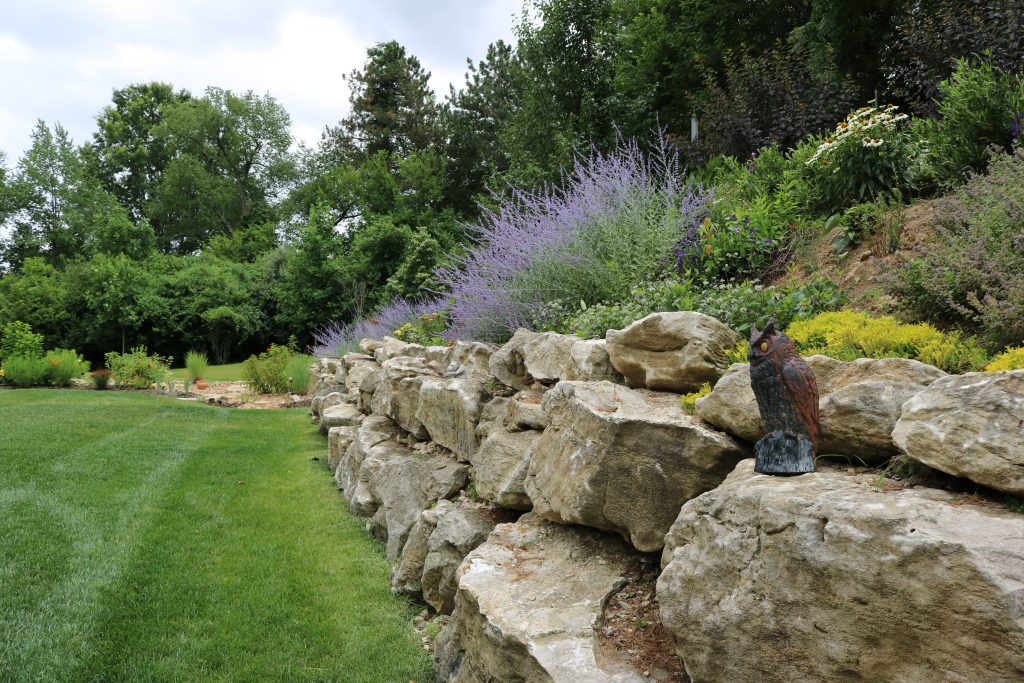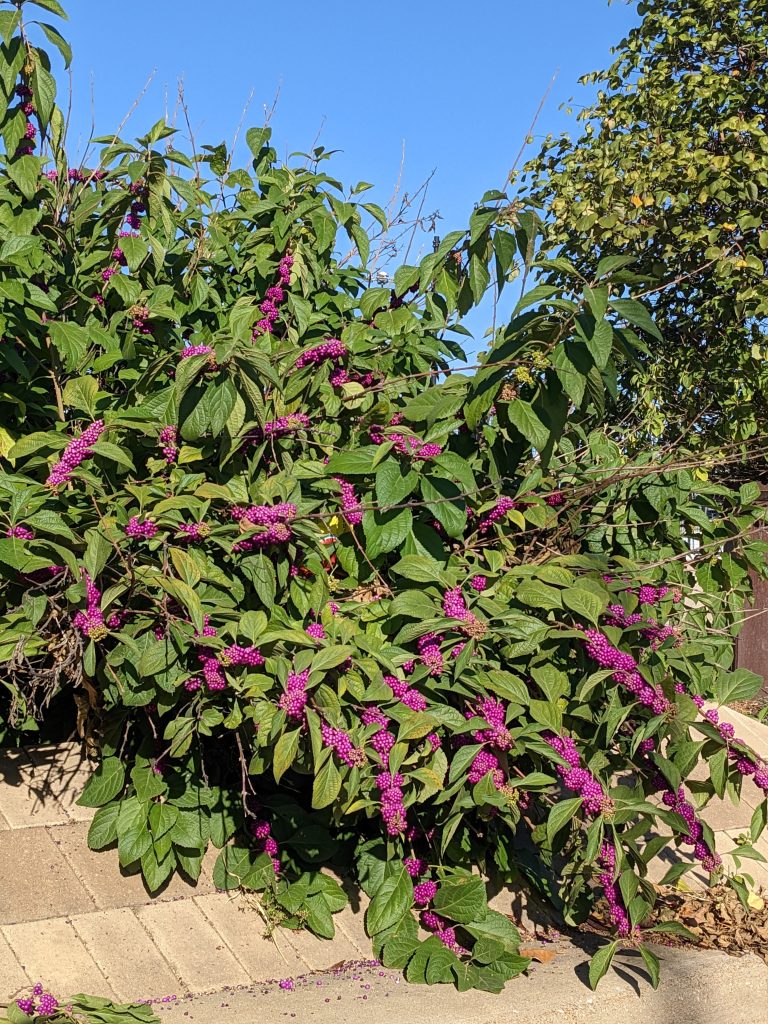Erosion is a common challenge faced by many, particularly in St. Louis, where fluctuating weather patterns and diverse terrains can lead to soil loss and landscape degradation. However, with strategic landscape design and hardscaping solutions, property owners can effectively control erosion issues and create stunning outdoor spaces that stand the test of time. Here, we will explore the benefits of using retaining walls, native plants, and other landscaping elements to combat erosion and ways in which a professional landscaper (like Quiet Village!) can help.

1. The Role of Retaining Walls in Erosion Control
Retaining walls serve as vital structures in erosion control, effectively preventing soil movement and safeguarding your property. They are especially valuable for outdoor spaces with slopes or uneven terrains. By using high quality materials like stone, brick, or large boulders, landscapers can create retaining walls that not only combat erosion but also enhance the visual appeal of your property. These walls can be strategically positioned to divert water flow, reducing the risk of soil erosion during heavy rainfall or runoff.
2. Harnessing the Power of Native Plants and Trees
Native plants and trees are excellent allies in erosion control due to their adaptability to the local climate and soil conditions. In St. Louis, homeowners can opt for a variety of native vegetation that not only stabilizes soil but also adds beauty and biodiversity to their landscapes. Some of our favorite options include:
- Eastern Redbud (Cercis canadensis): A stunning flowering tree that provides shade and soil stabilization.
- Black-Eyed Susan (Rudbeckia hirta): A vibrant perennial that prevents soil erosion and attracts pollinators.
- Little Bluestem (Schizachyrium scoparium): A native grass that forms dense root systems, perfect for stabilizing slopes.
- American Beautyberry (Callicarpa americana): A shrub with colorful berries that can help control soil erosion.

3. Integrating Smart Landscaping Elements
Beyond retaining walls and native plants, several other landscaping methods can contribute to erosion control:
- Terracing: Transforming steep slopes into a series of flat platforms, reducing the speed of water flow and soil erosion.
- Mulching: Applying organic mulch to your landscape beds aids in retaining moisture and preventing soil erosion.
- Rain Gardens: Constructing shallow depressions filled with native plants can capture rainwater, reducing runoff and soil erosion.
4. How a Landscaper Can Assist
Partnering with a seasoned landscaper ensures a comprehensive erosion control strategy tailored to your property’s unique needs. Us professionals have the expertise to:
- Assess Your Property: A thorough evaluation of your landscape’s terrain and soil conditions allows for a targeted approach to erosion control.
- Design and Install Retaining Walls: Expert landscapers can design and build retaining walls that seamlessly integrate with your landscape, enhancing both form and function.
- Select Native Plants: A landscaper’s knowledge of native flora ensures the right plants are chosen to stabilize soil and thrive in St. Louis’s climate as well as your unique property conditions.
- Implement Effective Landscaping Techniques: From terracing to rain gardens, landscapers can implement a range of techniques to minimize erosion risks.
Erosion control is a critical aspect of maintaining a resilient and visually appealing landscape. Utilizing retaining walls, native plants, and other landscaping elements, along with the guidance of a skilled landscaper, allows property owners to take proactive steps toward addressing erosion challenges. By investing in thoughtful landscape design and erosion control strategies, you can create a beautiful outdoor space that withstands the test of time while contributing to the health and sustainability of the local ecosystem.
